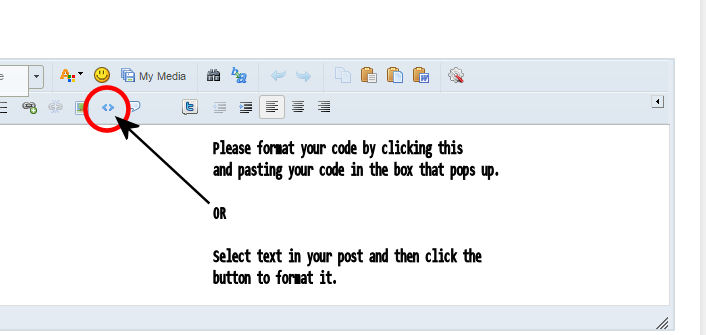I am having an issue with a sprite test. When I do not use removeSelf() my sprite sequence shows fine. However if I have a call following the play() command to the removeSelf() function,I see no sprite image at all. Since the up loader will not allow me to send the code any other way here it is.
Main:
– Sprites
local newPics = require(‘classes.spriteFunctions’)
– forward declarations and other locals
–local newAcorn = require(‘classes.acorn’).newAcorn – The acorn character
–local acorn = {}
– parameter test for sequence data parameters
local loops = 15
local runTime = 1500
local spriteX = 300
local spriteY = 700
–
– Background
local newBackGround = display.newRect(1500,800,3000,1600)
newBackGround:setFillColor(0.5)
– call spriteFunction flip pecan
spriteX = 300
spriteY = 700
runTime = 500
loops = 10
newPics.spriteSequences(loops, runTime, spriteX, spriteY,“compress”)
newPics.cleanup() – call remove self
– End playSequence
sprite definitions:
–
– created with TexturePacker
–
local SheetInfo = {}
SheetInfo.sheet =
{
frames = {
{
– Nut-Compress0001
x=268,
y=70,
width=64,
height=115,
},
{
– Nut-Compress0002
x=334,
y=70,
width=64,
height=115,
},
{
– Nut-Compress0003
x=466,
y=70,
width=64,
height=111,
sourceX = 0,
sourceY = 4,
sourceWidth = 64,
sourceHeight = 115
},
{
– Nut-Compress0004
x=532,
y=67,
width=64,
height=109,
sourceX = 0,
sourceY = 6,
sourceWidth = 64,
sourceHeight = 115
},
{
– Nut-Compress0005
x=598,
y=67,
width=64,
height=103,
sourceX = 0,
sourceY = 11,
sourceWidth = 64,
sourceHeight = 115
},
{
– Nut-Compress0006
x=664,
y=65,
width=64,
height=101,
sourceX = 0,
sourceY = 13,
sourceWidth = 64,
sourceHeight = 115
},
{
– Nut-Compress0007
x=730,
y=59,
width=64,
height=97,
sourceX = 0,
sourceY = 16,
sourceWidth = 64,
sourceHeight = 115
},
{
– Nut-Compress0008
x=796,
y=59,
width=64,
height=93,
sourceX = 0,
sourceY = 20,
sourceWidth = 64,
sourceHeight = 115
},
{
– Nut-Compress0009
x=796,
y=154,
width=64,
height=91,
sourceX = 0,
sourceY = 22,
sourceWidth = 64,
sourceHeight = 115
},
{
– Nut-Compress0010
x=730,
y=158,
width=64,
height=87,
sourceX = 0,
sourceY = 25,
sourceWidth = 64,
sourceHeight = 115
},
},
sheetContentWidth = 861,
sheetContentHeight = 252
}
SheetInfo.frameIndex =
{
[“Nut-Compress0001”] = 1,
[“Nut-Compress0002”] = 2,
[“Nut-Compress0003”] = 3,
[“Nut-Compress0004”] = 4,
[“Nut-Compress0005”] = 5,
[“Nut-Compress0006”] = 6,
[“Nut-Compress0007”] = 7,
[“Nut-Compress0008”] = 8,
[“Nut-Compress0009”] = 9,
[“Nut-Compress0010”] = 10
}
function SheetInfo:getSheet()
return self.sheet;
end
function SheetInfo:getFrameIndex(name)
return self.frameIndex[name];
end
return SheetInfo
SpritFunctions:
–
– SETUP
local sheetInfo = require( ‘classes.Nut_Sprites’ )
– Create the image sheet
local imageSheet = graphics.newImageSheet( ‘image/Nut_Sprites.png’,
sheetInfo:getSheet( ) )
local spriteOps = {}
spriteOps.spriteSequences = function(loops,runTime,spriteX,spriteY,action)
local loops = loops
local runTime = runTime
local spriteX = spriteX
local spriteY = spriteY
local action = action
– define the sprite image display sequences, cycle time, cycle counts
local sequenceData = {
{
name = “compress”,
start = 1,
count = 10,
time = runTime,
loopCount = loops
}
}
– End sequenceData
– set up new sprite object definition
local mySprite = display.newSprite( imageSheet, sequenceData )
spriteOps.cleanUp = function()
print(‘in cleanup’)
mySprite:removeSelf()
mySprite = nil
end
– execute called sprite
mySprite:setSequence( action )
mySprite:play( )
mySprite.x = spriteX
mySprite.y = spriteY
--mySprite:removeSelf( )
end
return spriteOps
As I said neither up loader would allow the .lua files to be loaded so I am forced to provide them here in this format. It did however accept the texture packer sprite sheet.

